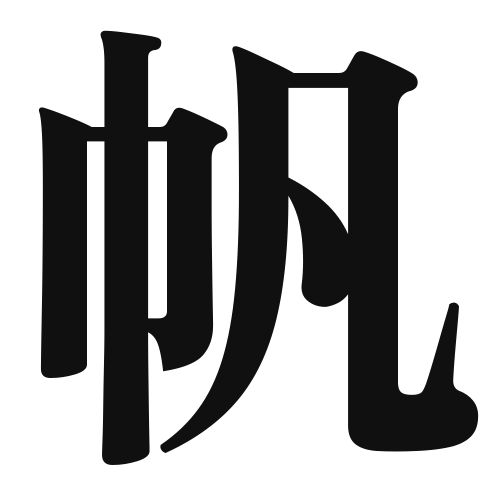1. Overview of Meaning
The kanji “帆” (pronounced “ho” in Japanese) means “sail.” It refers to the fabric used to catch the wind on a boat or ship, allowing it to move across water. This character symbolizes navigation and travel by sea.
2. Formation and Radical
The kanji “帆” is a compound character that combines elements to convey its meaning. It is made up of the radical “巾” (meaning “cloth”) and the phonetic component “半” (which contributes to its pronunciation). This combination reflects the idea of a cloth used for sailing.
3. Examples of Usage
Common words and phrases that include “帆” are:
- 帆船 (はんせん, “hansen”) – sailing ship
- 帆布 (はんぷ, “hanpu”) – sailcloth
Example sentence in daily conversation:
「今日は帆船に乗って海を渡ります。」(Today, I will cross the sea on a sailing ship.)
4. Synonyms and Antonyms
Similar kanji with related meanings include:
- 船 (ふね, “fune”) – boat or ship, which refers more generally to watercraft.
Antonyms or contrasting kanji include:
- 岸 (きし, “kishi”) – shore, which represents land as opposed to the sail that represents travel over water.
5. Cultural and Historical Background
The kanji “帆” is deeply connected to Japanese culture, particularly in relation to maritime activities and traditional fishing practices. Sails have been essential for navigation in Japan’s history, influencing trade and exploration.
Proverbs and idiomatic expressions related to “帆” include:
- 「帆を上げる」(to raise the sail) – meaning to set out on a journey or to take action.
